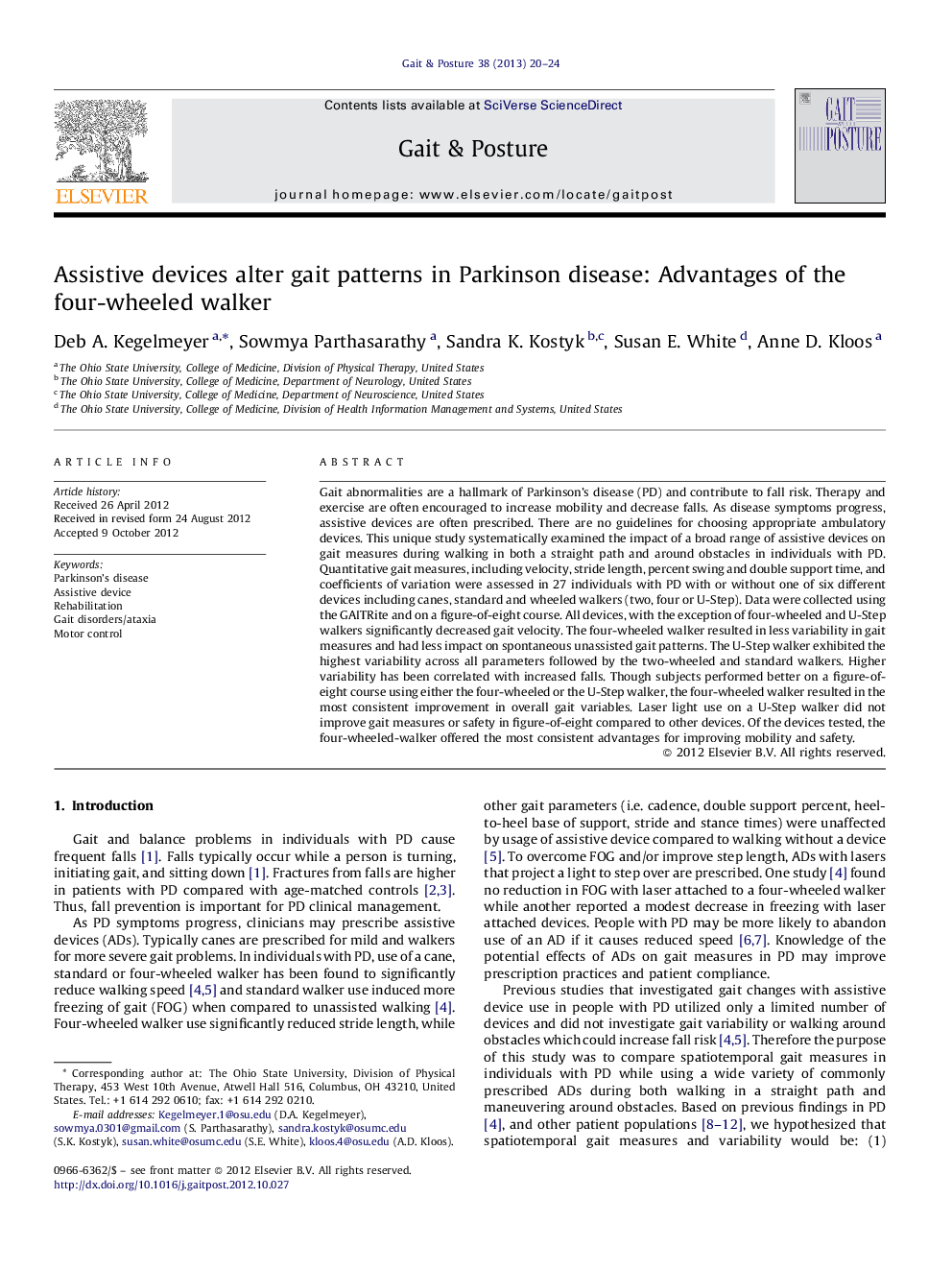| کد مقاله | کد نشریه | سال انتشار | مقاله انگلیسی | نسخه تمام متن |
|---|---|---|---|---|
| 6207484 | 1265662 | 2013 | 5 صفحه PDF | دانلود رایگان |
Gait abnormalities are a hallmark of Parkinson's disease (PD) and contribute to fall risk. Therapy and exercise are often encouraged to increase mobility and decrease falls. As disease symptoms progress, assistive devices are often prescribed. There are no guidelines for choosing appropriate ambulatory devices. This unique study systematically examined the impact of a broad range of assistive devices on gait measures during walking in both a straight path and around obstacles in individuals with PD. Quantitative gait measures, including velocity, stride length, percent swing and double support time, and coefficients of variation were assessed in 27 individuals with PD with or without one of six different devices including canes, standard and wheeled walkers (two, four or U-Step). Data were collected using the GAITRite and on a figure-of-eight course. All devices, with the exception of four-wheeled and U-Step walkers significantly decreased gait velocity. The four-wheeled walker resulted in less variability in gait measures and had less impact on spontaneous unassisted gait patterns. The U-Step walker exhibited the highest variability across all parameters followed by the two-wheeled and standard walkers. Higher variability has been correlated with increased falls. Though subjects performed better on a figure-of-eight course using either the four-wheeled or the U-Step walker, the four-wheeled walker resulted in the most consistent improvement in overall gait variables. Laser light use on a U-Step walker did not improve gait measures or safety in figure-of-eight compared to other devices. Of the devices tested, the four-wheeled-walker offered the most consistent advantages for improving mobility and safety.
⺠Gait with a 4WW produced a pattern most similar to the natural pattern with no AD. ⺠Gait with 4WW did not slow velocity or increase variability, as did other devices. ⺠The 4WW produced a safer and smoother gait when making turns. ⺠The 4WW is a good choice of AD for promoting safe ambulation in people with PD.
Journal: Gait & Posture - Volume 38, Issue 1, May 2013, Pages 20-24
